Dormosedan Gel Brochure
A comprehensive guide to the only FDA-approved oral sedative designed specifically for horses.
View Document

Dormosedan Gel is a veterinarian-prescribed mild standing sedative for horses that can be given by horse owners before non-painful procedures or stressful situations as a safe alternative to physical restraints. This easy-to-use oromucosal gel comes in a single-dose syringe and is administered under the horse's tongue. It helps to calm nervous or uncooperative horses when a veterinarian is not present, and enhances safety for both horses and handlers, making it ideal for farrier work, first aid, and other husbandry tasks. For more information, see the full Dormosedan Gel Prescribing Information.
Limited-time rebate offer available June 1–December 31, 2025
Visit our rebate center or text REBATES to 75834,
upload a photo of your receipt* and request your rebate.
For horse care and husbandry procedures where horses may become too anxious to work with safely, acquiring prescription Dormosedan Gel from a veterinarian ahead of time can provide peace of mind and a helping hand to facilitate safe experiences.
40 minutes
90–180 minutes
3–4 hours
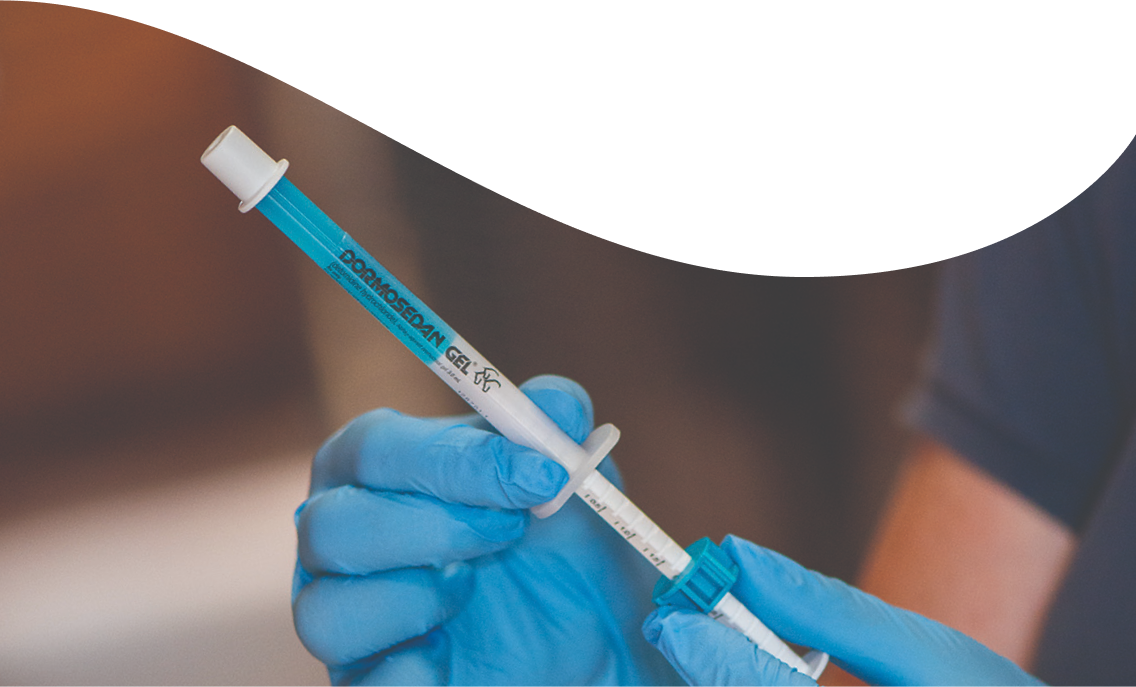
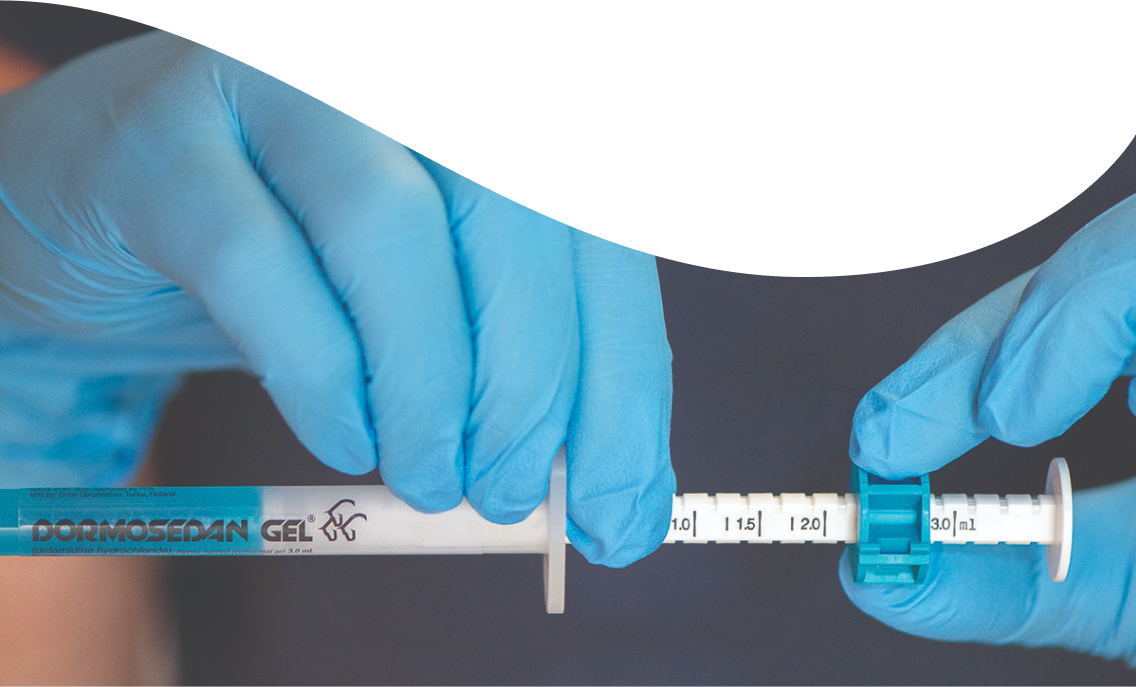
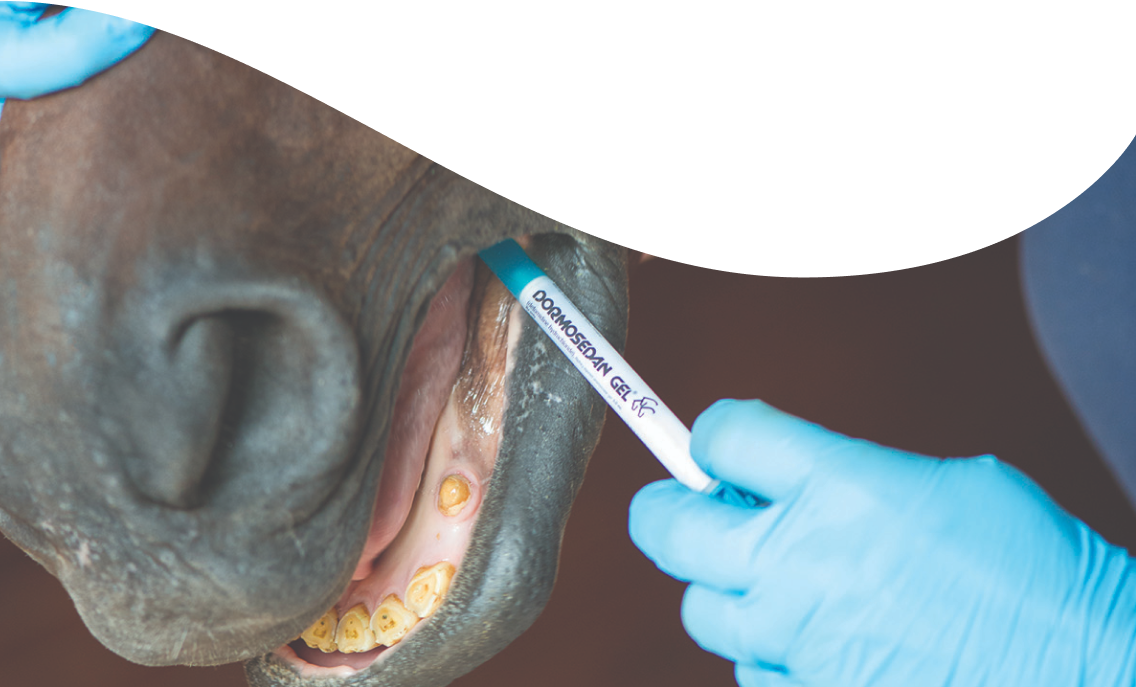
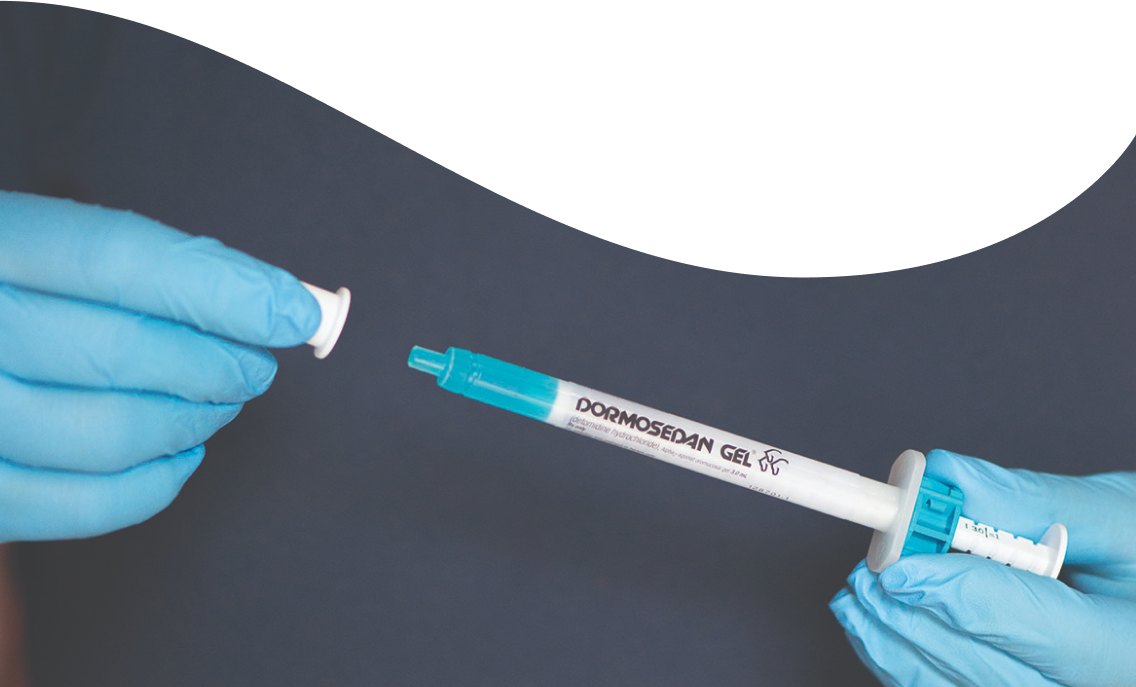
| Approximate body weight (lbs) | Dose volume (mL) |
|---|---|
| 330–439 | 1.00 |
| 440–549 | 1.25 |
| 550–659 | 1.50 |
| 660-769 | 1.75 |
| 770-879 | 2.00 |
| 880-989 | 2.25 |
| 990-1,099 | 2.50 |
| 1,100-1,209 | 2.75 |
| 1,210-1,320 | 3.00 |
You must have an established client relationship with a veterinarian to be prescribed Dormosedan Gel. Reach out to your veterinarian to discuss whether this product is right for your horse.
Wear impermeable gloves when handling the dosing syringe that contains detomidine hydrochloride gel. For a minimum of 2 hours after administration, wear impermeable gloves when performing any tasks that require contact with the horse’s mouth. If you have or have had a history of cardiovascular disease (for example, hypertension or heart attack) take special precautions and avoid direct exposure to the dosing syringe. Do not come in contact with the mouth or any saliva of any horse that was treated with hydrochloride detomidine gel for a minimum of 2 hours.
Use an equine weight tape or scale to check the horse’s body weight prior to administration. The dosing table provides the dose volume to administer for the horse’s body weight. Dormosedan Gel must be administered UNDER THE HORSE’S TONGUE and is NOT meant to be swallowed. It takes approximately 40 minutes for a horse to become fully sedate and the sedative effect lasts about 90 to 180 minutes. For best results, do not interact with the horse between the administration of Dormosedan Gel and beginning the procedure. If the horse is still sedate after completing the procedure, let him recover in a warm, quiet place and withhold food and water until the sedative has worn off. Consult your veterinarian for further instructions. The syringe is designed to be used only once. Partially used syringes should be properly discarded.
Following appropriate dosing of the gel, your horse should be kept in a quiet area. As the drug takes effect, you will typically see the head lower and the front legs plant in a firm stance. Onset of sedation usually takes about 40 minutes. You may also notice slight swaying, sweating, salivation and muscle tremors. Be careful when handling sedated horses. Handling or any other sudden stimuli, including noise, may cause a defense reaction (for example, kicking) even in a horse that appears to be fully sedated. It may take up to 3 to 4 hours for the horse to recover from sedation. If the horse is still sedate after completing the procedure, let him recover in a warm, quiet place and withhold food and water until the sedative has worn off.
If your horse becomes injured and fractious, or simply won’t cooperate, administering Dormosedan Gel, a mild sedative available with a prescription from your veterinarian, can help restore calm and help prevent further injury. It’s helpful to have a few tubes on hand in your equine first-aid kits for stressful situations or emergencies, such as treating an injury, bandage changes, hoof trimming or shoeing, and minor nonpainful procedures. We encourage you to work with a veterinarian for additional guidance on emergency care and first aid.
Some horses may exhibit fireworks-related anxiety, such as galloping, sweating, trembling and damaging fences. Talk to your veterinarian about obtaining a prescription for Dormosedan Gel ahead of time to help keep your horse calm, avoid injuries and ensure a stress-free holiday.
For more FAQs regarding handler use and safety when using Dormosedan Gel, view this handler use and safety information sheet.

Multiple Diseases
Ask a Vet
The first and only vaccine to help protect against the five potentially fatal core equine diseases in a single injection.2
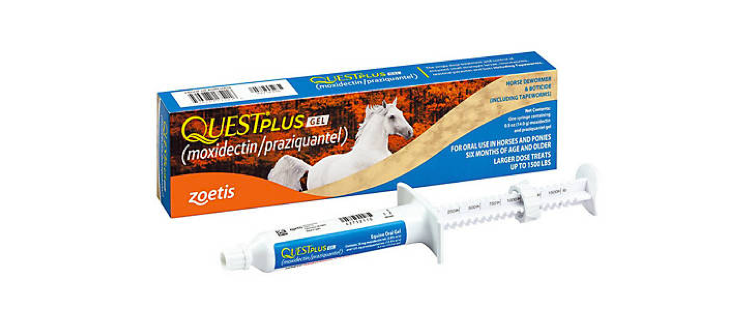
Multiple Parasites
OTC
(moxidectin/praziquantel)
Recommended for the end of grazing season. The only dewormer that treats encysted small strongyles, bots and tapeworms in a single dose, with broad-spectrum support that also treats large strongyles (bloodworms), pinworms, hairworms, and stomach worms. Easy gel formula dissolves on the tongue.
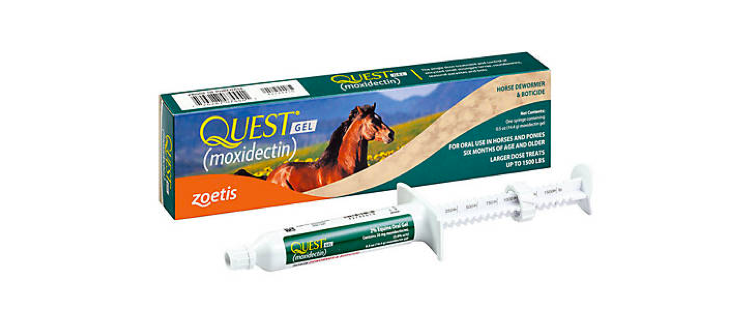
Multiple Parasites
OTC
(moxidectin)
Recommended for early grazing season. Quest Gel and Quest Plus Gel are the only dewormers that treat encysted small strongyles and bots in a single dose, with broad-spectrum support that also treats large strongyles (bloodworms), pinworms, hairworms and stomach worms. Easy gel formula dissolves on the tongue.
Dormosedan Gel
Do not use DORMOSEDAN GEL in horses with pre-existing atrioventricular (AV) or sinoatrial (SA) block, with severe coronary insufficiency, cerebrovascular disease, respiratory disease, or chronic renal failure. Do not use in anesthetized or sedated horses, or in conditions of shock, severe debilitation or stress due to extreme heat, cold, fatigue or high altitude. Handle gel-dosing syringes with caution to avoid direct exposure to skin, eyes or mouth. See full Prescribing Information here.
Quest Gel & Quest Plus Gel
Do not use Quest Gel or Quest Plus Gel in foals less than 6 months of age or in sick, debilitated and underweight horses. Do not use in other animal species, as severe adverse reactions, including fatalities in dogs, may result.
For rebate details and requirements, visit the Zoetis Rebate Center, available at EquineRewards.com. Limit of two rebate submissions per household. Maximum rebate of $3 per submission for a total of $6 rebate per person.
*Receipts must be itemized (include product name, package size and price) and must include veterinarian or retailer name. Credit card receipts are not valid. One receipt per image uploaded.
References
1. Zoetis Inc. Data on file. Equine pain and sedation market research. October 2023.
2. Zoetis Inc. Data on file. Study Report No. B951R-US-20-160